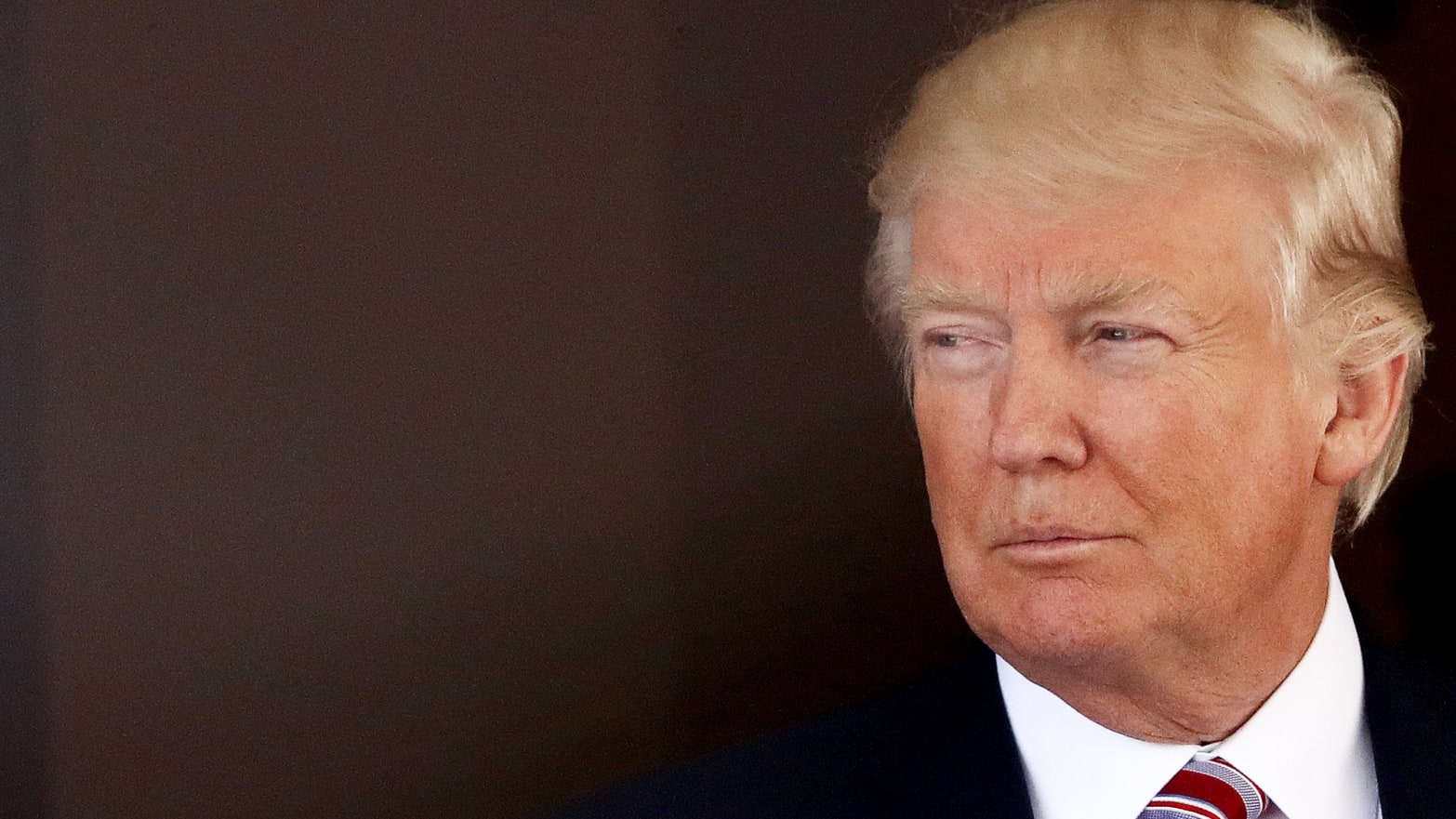BRET STEPHENS, NY TIMES
The Progressive Assault on Israel
A movement that can detect a racist dog-whistle from miles away is strangely deaf when it comes to some of the barking on its own side of the fence.
It happened again last month in Detroit. Pro-Palestinian demonstrators seized the stage of the National L.G.B.T.Q. Task Force’s marquee conference, “Creating Change” and demanded a boycott of Israel. “From the river to the sea, Palestine will be free,” they chanted — the tediously malign, thinly veiled call to end Israel as a Jewish state.
They were met with sustained applause by the audience at what is the largest annual conference of L.G.B.T.Q. activists in the United States. Conference organizers did nothing to stop the disruption or disavow the demonstrators.
Scenes of the kind that played out at the L.G.B.T.Q. conferences — not to mention college campuses across the United States — are familiar to anyone involved in the politics of the American Jewish community. They have burst into wider consciousness in recent months, thanks to revelations that Jewish organizers of the 2017 Women’s March were deliberately sidelined, excluded and attacked by some of its founders, at least one of whom, activist Tamika Mallory, is an unapologetic admirer of Louis Farrakhan, the Nation of Islam’s unapologetically anti-Semitic leader.
 |
| Linda Sarsour, left, and Tamika Mallory, two of the national co-chairwomen of the Women’s March at the 2019 event in January. Mallory’s admiration for Louis Farrakhan, the Nation of Islam leader, led many high-profile sponsors of the march to withdraw support this year.Jim Lo Scalzo/European Pressphoto Agency, via Shutterstock |
They have also burst into Congress, largely as a result of the election of Democratic Representatives Rashida Tlaib of Michigan and Ilhan Omar of Minnesota. Both women support boycotts of Israel. Both have also written tweets with distinctly anti-Semitic undertones. Far from being reproached or condemned by their party, as Iowa’s Steve King was by Republicans, they have become Democratic rock stars. (Omar, to her credit, recanted her tweet; Tlaib did not.)
All of this is profoundly unsettling to a Jewish community that has generally seen the Democratic Party as its political home. That’s not because American Jews are unfamiliar with the radical left’s militant hostility toward the Jewish state. That’s been true for decades. Nor is it because American Jews are suddenly tilting right: Some 76 percent voted for Democrats in the midterms.
What’s unsettling is that the far-left’s hostility is now being mainstreamed by the not-so-far left. Anti-Zionism — that is, rejection not just of this or that Israeli policy, but also of the idea of a Jewish state itself — is becoming a respectable position among people who would never support the elimination of any other country in any other circumstance. And it is churning up a new wave of nakedly anti-Jewish bigotry in its wake, as when three women holding rainbow flags embossed with a Star of David at the 2017 Chicago Dyke March were ejected on grounds that the star was “a trigger.”
How did this happen?
The progressive answer is straightforward: Israel and its supporters, they say, did this to themselves. More than a half-century of occupation of Palestinian territories is a massive injustice that fair-minded people can no longer ignore, especially given America’s financial support for Israel. Continued settlement expansion in the West Bank proves Israel has no interest in making peace on equitable terms. And endless occupation makes Israel’s vaunted democracy less about Jewish self-determination than it is about ethnic subjugation.
There’s more to the indictment, but that’s the nub of it. It would be damning if it were true, or even half-true. It’s not.
A few facts ought at least to stir the thinking of those who subscribe to the progressive narrative. Israel's enemies were committed to its destruction long before it occupied a single inch of Gaza or the West Bank. In proportion to its size, Israel has voluntarily relinquished more territory taken in war than any state in the world. Israeli prime ministers offered a Palestinian state in 2000 and 2008; they were refused both times. The government of Ariel Sharon removed every Israeli settlement and soldier from the Gaza Strip in 2005. The result of Israel’s withdrawal allowed Hamas to seize power two years later and spark three wars, causing ordinary Israelis to think twice about the wisdom of duplicating the experience in the West Bank. Nearly 1,300 Israeli civilians have been killed in Palestinian terrorist attacks in this century: That’s the proportional equivalent of about 16 Sept. 11’s in the United States.
Also: If the Jewish state is really so villainous, why doesn’t it behave more like Syria’s Bashar al-Assad or Russia’s Vladimir Putin — both of whom, curiously, continue to have prominent sympathizers and apologists on the anti-Israel left?
None of this is to embrace the “Likud narrative” of the conflict, or support the policies of Benjamin Netanyahu, or reject the idea of Palestinian statehood, or suggest that Israel is above criticism and reproach. For the record, I support a two-state solution, just as I supported Israel’s withdrawal from the Gaza Strip when I was the editor of The Jerusalem Post.
What it is to say is that the Israel-Palestinian conflict is far more complicated than the black-and-white picture drawn by Israel’s progressive critics. But the deeper flaw in progressive thinking on Israel — the flaw that has resulted in this efflorescence of bigotry — isn’t that it rests on a faulty factual foundation. It’s that its core intellectual assumptions are wrong and rotten.
The first assumption is that Israel’s choices toward the Palestinians aren’t agonizingly hard (as they are for some of the reasons mentioned above), but actually are quite easy — just a matter of stopping settlement construction, reaching a reasonable settlement with the Palestinians, making peace, and living relatively happily ever after. But this is a caricature, and it’s one that quickly descends to calumny: That is, the idea that Israel’s failure to make the “right” choice is proof of its boundless greed for Palestinian land and wicked indifference to their plight.
Next is the belief that anti-Zionism is a legitimate political position, and not another form of prejudice.
It is one thing to argue, in the moot court of historical what-ifs, that Israel should not have come into being, at least not where it is now. It is also fair to say that there is much to dislike about Israel’s current leadership, just as there’s much not to like about America’s. But nobody claims the election of Donald Trump makes America an illegitimate state.
Israel is now the home of nearly nine million citizens, with an identity that is as distinctively and proudly Israeli as the Dutch are Dutch or the Danes Danish. Anti-Zionism proposes nothing less than the elimination of that identity and the political dispossession of those who cherish it, with no real thought of what would likely happen to the dispossessed. Do progressives expect the rights of Jews to be protected should Hamas someday assume the leadership of a reconstituted “Palestine”?
Then there’s the astounding view that anti-Zionism bears only a tangential relationship to anti-Semitism. Hatred of Jews is a shape-shifting phenomenon that historically has melded with the prejudices of the time in order to gain greater political currency. Jews have been hated for reasons of religion, race, lack of national attachments, and now an excess of national attachment. The arguments for hating Jews vary; the target of the hatred tragically remains the same.
Of course it’s theoretically possible to distinguish anti-Zionism from anti-Semitism, just as it’s theoretically possible to distinguish segregationism from racism. But the striking feature of anti-Zionist rhetoric is how broadly it overlaps with traditionally anti-Semitic tropes.
To say, as progressives sometimes do, that Jews are “colonizers” in Israel is anti-Semitic because it advances the lie that there is no ancestral or historic Jewish tie to the land. To claim that Israel is committing genocide in Gaza, when manifestly it is not, is anti-Semitic because it’s an attempt to Nazify the Jewish state. To insist that the only state in the world that has forfeited the moral right to exist just happens to be the Jewish state is anti-Semitic, too: Are Israel’s purported crimes really worse than those of, say, Zimbabwe or China, whose rights to exist are never called into question?
But the most toxic assumption is that Jews, whether in Israel or the U.S., can never really be thought of as victims or even as a minority because they are white, wealthy, powerful and “privileged.” This relies on a simplistic concept of power that collapses on a moment’s inspection.
Jews in Germany were economically and even politically powerful in the 1920s. And then they were in Buchenwald. Israel appears powerful vis-à-vis the Palestinians, but considerably less so in the context of a broader Middle East saturated with genocidal anti-Semitism. American Jews are comparatively wealthy. But wealth without political power, as Hannah Arendt understood, is a recipe for hatred. The Jews of the Squirrel Hill neighborhood of Pittsburgh are almost surely “privileged” according to various socio-economic measures. But privilege didn’t save the congregants of the Tree of Life synagogue last year.
Nor can the racial politics of the United States or any other country be projected onto the Israeli-Palestinian conflict, as some have desperately sought to do. Nearly half of all Jewish Israelis have Middle Eastern roots; some, in fact, are black. Martin Luther King Jr. preached nonviolent resistance; Yasir Arafat practiced terrorism. The civil rights movement was about getting America to live up its founding ideals; anti-Zionism is about destroying Israel’s founding ideals.
As for the oft-cited apartheid analogy, black South Africans did not have a place in the old regime’s Parliament, as Israeli Arabs have in the Knesset; nor were they admitted to white universities, as Israeli Arabs are to Israeli universities. Israel can do more to advance the rights of its Arab citizens (just as the United States, France, Britain and other countries can for their own minorities). And Israel can also do more to ease the lives of Palestinians who are not citizens. But the comparison of Israel to apartheid South Africa is unfair to the former and an insult to the victims of the latter.
PETER BEINART, GUARDIAN
PETER BEINART, GUARDIAN
Debunking the myth that anti-Zionism is antisemitic
All over the world, it is an alarming time to be Jewish – but conflating anti-Zionism with Jew-hatred is a tragic mistake.



 In 1986, “Soul Man” was a major Hollywood release, featuring C. Thomas Howell in blackface, posing as an African-American to reap the rewards of affirmative action. As recently as the early 2000s, Jimmy Kimmel wore blackface on “The Man Show” while doing an impression of the basketball player Karl Malone. He has never apologized for it, and he’s on television five nights a week. And it wasn’t until 2015 that the Metropolitan Opera of New York stopped using makeup to darken the faces of the singers in the lead role of “Othello.”
In 1986, “Soul Man” was a major Hollywood release, featuring C. Thomas Howell in blackface, posing as an African-American to reap the rewards of affirmative action. As recently as the early 2000s, Jimmy Kimmel wore blackface on “The Man Show” while doing an impression of the basketball player Karl Malone. He has never apologized for it, and he’s on television five nights a week. And it wasn’t until 2015 that the Metropolitan Opera of New York stopped using makeup to darken the faces of the singers in the lead role of “Othello.”



















